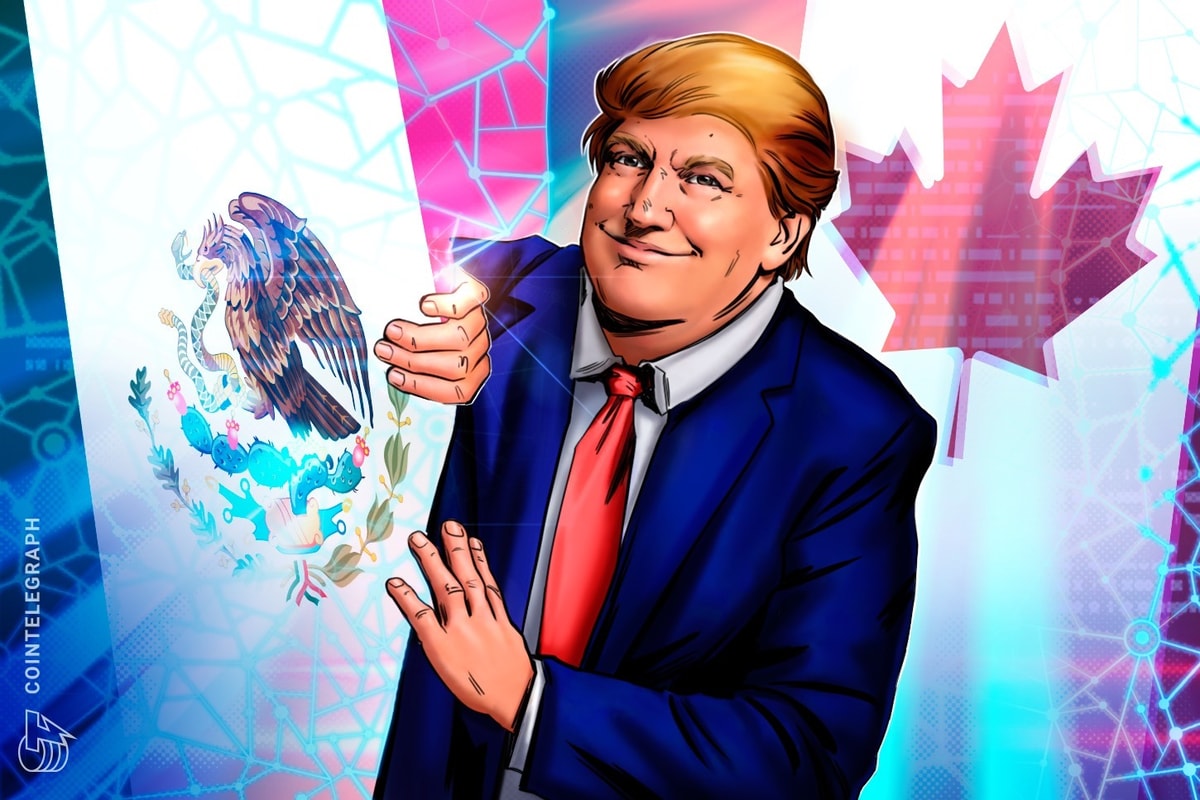Update (Feb.4 at 5:57 am UTC): This article has been updated to include comments from Swyftx’s lead analyst Pav Hundal, Chris Chung from Titan and Sean Dawson from Derive.xyz.
Crypto markets sharply rebounded after US President Donald Trump agreed to put a temporary hold on proposed tariffs aimed at Canada and Mexico as negotiations with the countries continue.
In a Feb. 3 statement on X, Canadian Prime minster Justin Trudeau said that after a phone call with Trump, the 25% tariffs would be paused for at least 30 days and the two countries would work together.
Trudeau says Canada would be enhancing “coordination with our American partners” by implementing a $1.3 billion border plan, including appointing a Fentanyl czar, listing cartels as terrorists and reinforcing the US-Canada border with helicopters and more personnel.
Source: Justin Trudeau
Mexico’s tariffs have also been paused for a month. Mexico President Claudia Sheinbaum said in a Feb. 3 statement to X that the two leaders had “reached a series of agreements,” with a similar promise of reinforcing the land border shared between the two countries.
“Our teams will begin working today on two fronts: security and trade. They are pausing tariffs for one month from now,” Sheinbaum said.
In a Feb. 3 interview with Bloomberg TV, Trump said the US and Mexico have not “agreed on tariffs yet” and they could still go into effect.
Bitcoin and altcoins rebound
Following the string of announcements by world leaders, the crypto market has been steadily climbing.
Bitcoin (BTC) has increased has crossed over the 100,000 threshold to $101,731, after hitting a low of $92,000 the day before, according to CoinMarketCap.
Meanwhile, CoinMarketCap shows Ether (ETH) has also performed better compared to Feb. 2. The second-largest cryptocurrency by market cap reached a low of $2,451, but it has since climbed back to $2,880.
The Crypto Fear & Greed Index, which measures market sentiment for Bitcoin and other cryptocurrencies, has also seen an uptick, crossing over into greed territory with a score of 72 out of 100 after previously being in fear.
The crypto Fear & Greed Index score has risen on the news that tariffs on Canada and Mexico have been paused. Source: Alternative.me
Pav Hundal, lead market analyst at crypto exchange Swyftx says the recent developments could pave a path to new all-time highs.
He said most of the outflows yesterday were a flight from uncertainty, and that the pause on tariffs has left investors somewhere between relieved and cheerful, leading to a “complete recovery in many digital assets.”
“If the shadow of tariffs continues to recede, and it is a big 'if,’ all you’re really left with is good news and economic data that you can at least hedge against,” he said.
“I like Bitcoin’s chances of hitting new all-time highs very quickly in a world where the tariff threat is low, and the US policy environment is so accommodating,” Hundal added.
Sean Dawson, head of research at decentralized protocol, Derive.xyz told Cointelegraph that despite ongoing trade tensions, there’s potential for a recovery, especially after the pause on tariffs and executive order directing the US government to create a sovereign wealth fund.
“Trump’s Executive Order to establish a sovereign wealth fund under the Treasury and Commerce departments could signal bullish sentiment for the digital asset space,” he said.
“This is particularly relevant as Commerce Secretary nominee Howard Lutnick has been a strong advocate for the industry.”
Related: Nasdaq futures plunge 2.7% as Trump’s trade war rattles markets
Cryptocurrency prices had plummeted only a day earlier, on Feb. 3, after Trump announced potential tariffs on goods from China, Mexico and Canada. Some estimates suggested up to $10 billion of worth capital was liquidated from the markets.
The Feb. 1 executive order imposing the tariffs on Mexico and Canada also slapped China with a 10% tariff.
Chris Chung, founder of Solana swap platform Titan, told Cointelegraph he thinks the bloodbath that followed after the tariffs was an overreaction from the market because “digital transactions aren’t tariffed,” and the new has “little direct impact on cryptocurrency.”
In the long run, if the tariffs are here to stay, Chung says he expects they will likely attract more inflows into digital assets in the long term because most of the crypto ecosystem is USD-based.
“As people’s home currencies, like the Canadian dollar, plummet against the US dollar, we will see more inflows into both USD-denominated stablecoins and crypto assets like Bitcoin and altcoins,” he said.
“And if the tariffs cause inflation, as many fear they will, then even US investors will seek refuge in cryptocurrency,” Chung added.
Magazine: XRP to $4 next? SBF’s parents seek Trump pardon, and more: Hodler’s Digest, Jan. 26 – Feb. 1







